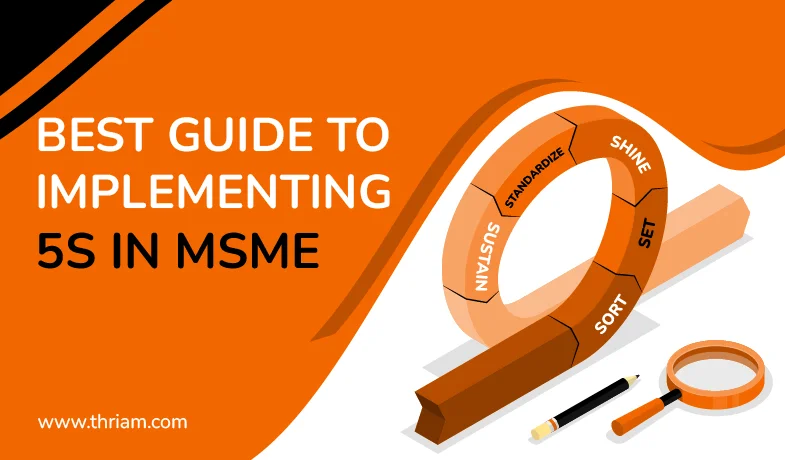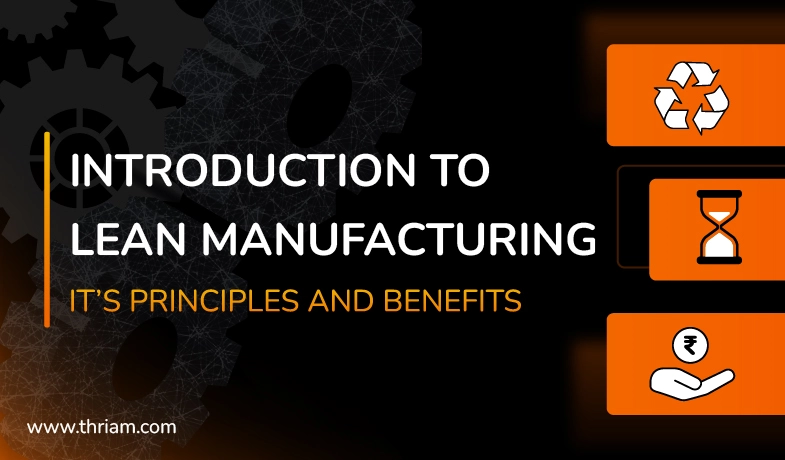Boosting Productivity with 5S: The Path to Organized and Efficient Workspaces
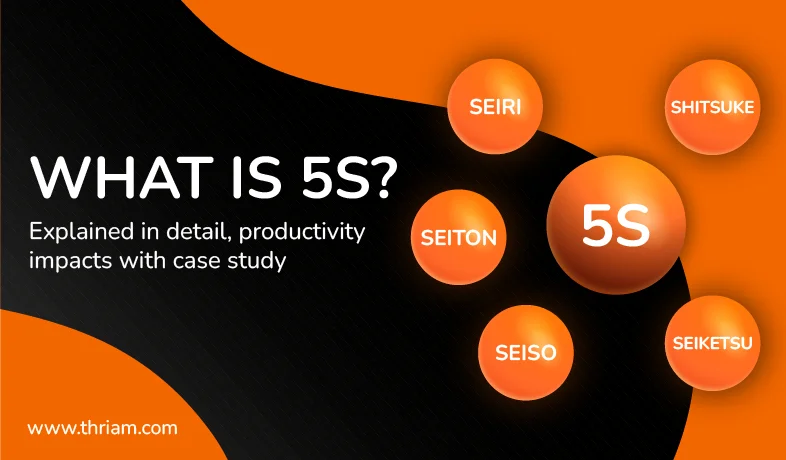
Introduction:
In today's fast-paced and competitive business environment, optimizing productivity and efficiency is crucial for success. One powerful methodology that helps achieve these goals is 5S. Originally developed in Japan, 5S is a system for organizing and maintaining clean workspaces. It promotes a culture of continuous improvement and enhances productivity by eliminating waste, reducing errors, and improving overall workplace efficiency. In this blog, we will explore each of the 5S's in detail and highlight their significance in driving productivity.
1. Sort (Seiri):
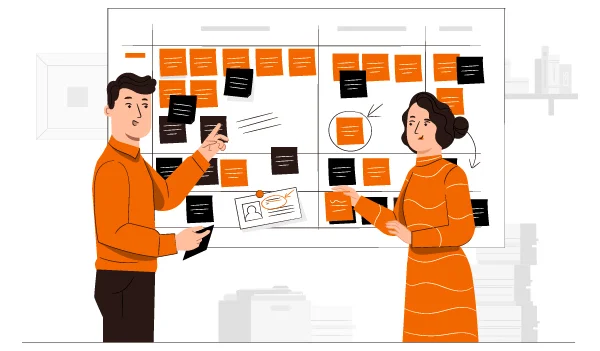
The first "S" in 5S is Sort, also known as Seiri. It involves systematically separating necessary items from unnecessary ones. The goal is to remove any items, tools, or materials that are not essential for the work process. Sorting helps create a clutter-free environment, streamlines workflows, and reduces the time wasted searching for tools or materials. By eliminating unnecessary items, teams can focus on what's truly important, leading to improved productivity and reduced distractions.
2. Set in Order (Seiton):

The second "S" in 5S is Set in Order, or Seiton. This step focuses on organizing and arranging the necessary items in a logical and efficient manner. Tools, equipment, and materials should have designated places for easy retrieval and storage. Clear labeling, visual cues, and shadow boards can be used to guide employees in returning items to their proper locations. A well-organized workspace minimizes the risk of errors, improves workflow, and reduces the time spent searching for and accessing required items.
3. Shine (Seiso):

Shine, or Seiso, emphasizes cleanliness and maintenance. This step involves regular cleaning and upkeep of the workspace, equipment, and tools. It promotes a safe and visually appealing environment, helps identify maintenance issues early on, and prevents the accumulation of dirt and debris that could hinder productivity. Cleaning tasks can be incorporated into daily routines or assigned to specific team members, fostering a sense of ownership and pride in the workspace.
GET INSTANT QUOTE
4. Standardize (Seiketsu):

Standardize, or Seiketsu, aims to establish standardized practices and procedures for sustaining the first three S's. It involves documenting and communicating the newly established work practices, including sorting methods, organizing principles, cleaning routines, and maintenance schedules. Standardization ensures consistency, facilitates training of new employees, and enables continuous improvement efforts. By establishing clear standards, teams can maintain an organized and efficient workspace over the long term.
5. Sustain (Shitsuke):
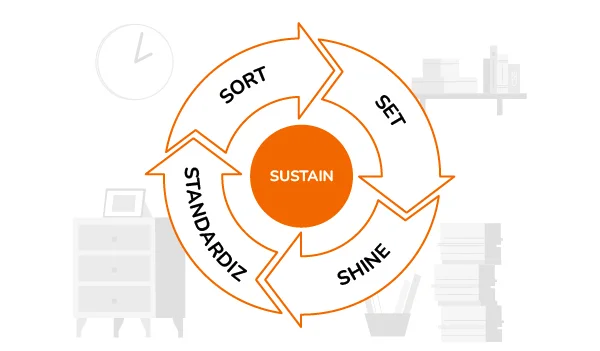
The final "S" in 5S is Sustain, or Shitsuke. This step focuses on creating a culture of continuous improvement and maintaining the achieved results. It involves employee engagement, regular audits, and ongoing training to ensure adherence to the 5S principles. Sustaining the 5S practices requires commitment from all team members and encourages them to take ownership of their workspace. With sustained efforts, the benefits of improved productivity, reduced waste, and enhanced efficiency become ingrained in the organizational culture.
Significance of 5S in Improving Productivity:
Implementing the 5S methodology brings several significant benefits that directly impact productivity:
- Waste Reduction: By eliminating unnecessary items and organizing workspaces efficiently, 5S minimizes waste, such as time spent searching for tools, excessive inventory, or defects caused by disorganization.
- Improved Safety: A clean and organized workspace reduces the risk of accidents and injuries, enhancing employee safety and well-being. A safe environment leads to increased productivity due to reduced downtime and improved focus on work tasks.
- Enhanced Efficiency: 5S streamlines workflows, reduces clutter, and ensures easy access to tools and materials. This efficiency translates into smoother processes, reduced downtime, and improved overall productivity.
- Error Prevention: A well-organized workspace with standardized processes reduces the likelihood of errors or mistakes. Clear labeling and visual cues help employees quickly identify and retrieve the right tools or materials, minimizing errors and rework.
- Employee Morale and Engagement: A clean, organized, and well-maintained workspace creates a positive work environment, boosting employee morale and engagement. Engaged employees are more productive, innovative, and committed to delivering high-quality work.
Case Study:
The Implementation of 5S Methodology in a Car Manufacturing Factory: Streamlining Processes and Improving Productivity
The 5S methodology is a well-known lean management technique that focuses on creating a clean and organized workplace. It aims to optimize efficiency and productivity by eliminating waste, improving safety, and streamlining processes. This case study examines how the implementation of 5S methodology in a car manufacturing factory resulted in significant improvements in productivity by reducing waste and reorganizing the workspace.
Overview of the Factory:
Before the implementation of 5S, the car manufacturing factory faced several operational challenges. The workplace was cluttered and disorganized, making it difficult for workers to find tools, parts, and equipment when needed. The lack of standardized processes led to inefficiencies and delays in production. Additionally, safety hazards were prevalent due to the improper storage and disposal of materials. These issues resulted in extended lead times, decreased productivity, and compromised quality control.
Steps Taken to Implement 5S:
- Sort: The first step involved training employees on the importance of maintaining a clutter-free and organized workspace. Workers were encouraged to sort through their workstations, identifying and removing unnecessary items, tools, and materials. Redundant or outdated equipment was properly disposed of, and storage areas were designated for frequently used tools and supplies.
- Set in Order: With the clutter removed, the factory focused on creating logical and efficient storage systems. Tools, parts, and equipment were labeled and placed in designated areas to ensure they were easily accessible when needed. Workstations were arranged ergonomically to minimize unnecessary movement and optimize workflow. Visual management techniques, such as color-coding and shadow boards, were introduced to improve organization.
- Shine: Emphasizing cleanliness and maintenance became a priority. Regular cleaning schedules were established for workstations, equipment, and common areas. An emphasis was placed on preventive maintenance to minimize breakdowns and ensure optimal equipment performance. Spill response procedures and waste disposal protocols were implemented to improve safety.
- Standardize: Standardization played a critical role in streamlining processes. Clear guidelines were established for work procedures, including standard operating procedures (SOPs) and work instructions. Visual cues, such as visual work instructions and checklists, were introduced to ensure consistency and facilitate training for new employees. Daily, weekly, and monthly checklists were implemented to establish routine maintenance and housekeeping tasks.
- Sustain: The final step involved developing a culture of continuous improvement. Regular training sessions, workshops, and meetings were conducted to reinforce 5S principles and promote employee engagement. Monthly audits were performed to assess compliance with 5S standards, identify areas for improvement, and recognize exemplary performance. A reward and recognition program was introduced to motivate employees and sustain the momentum of improvement.
Impact of 5S Implementation on Productivity:
The implementation of 5S methodology yielded significant improvements in productivity in the car manufacturing factory. The following examples illustrate the positive impact:
- Reduced Lead Times: By eliminating clutter and optimizing workstations, workers spent less time searching for tools and equipment, resulting in reduced lead times for production processes.
- Improved Quality Control: The standardized processes and visual management techniques enhanced quality control by ensuring consistency, reducing errors, and minimizing defects.
- Increased Output: Streamlined processes and reduced waste led to increased efficiency and output. Workers were able to focus on value-added tasks and minimize non-value-added activities.
- Enhanced Safety: The reorganization of the workspace and implementation of proper storage and disposal procedures improved safety conditions, reducing the risk of accidents and injuries.
Challenges and Obstacles Overcome:
During the implementation of 5S, the factory faced some challenges, including resistance to change and the need for ongoing employee engagement. To address these challenges, the management implemented comprehensive training programs, held regular communication sessions to address concerns, and provided the necessary support and resources for the sustained implementation of 5S.
Case study conclusion:
The implementation of 5S methodology in the car manufacturing factory resulted in significant improvements in productivity by reducing waste and streamlining processes. Through the systematic application of the 5S principles, the factory achieved reduced lead times, improved quality control, increased output, and enhanced safety. The success of this case study demonstrates the benefits of 5S methodology in optimizing workplace efficiency and sets a precedent for other organizations to adopt similar practices to improve their own productivity and performance.
Note: The case study provided is for illustrative purposes only and does not represent any specific car manufacturing factory.
Conclusion:
Implementing the 5S methodology can significantly improve productivity by creating organized, efficient, and visually appealing workspaces. Each of the 5S's - Sort, Set in Order, Shine, Standardize, and Sustain - plays a crucial role in eliminating waste, reducing errors, and fostering a culture of continuous improvement. By embracing the principles of 5S, organizations can achieve higher levels of productivity, enhance employee satisfaction, and drive sustainable growth in today's competitive business landscape.
